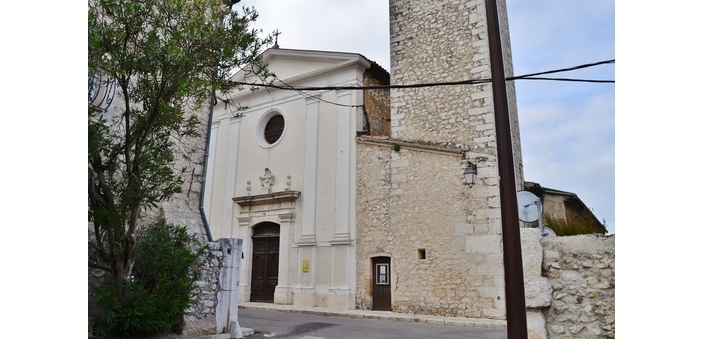Under the auspices of the Heritage Foundation, the municipality of La-Colle-sur-Loup is launching a popular patronage campaign to support its project of restoring the Saint Jacques church, the parish church of the municipality.
The restoration will initially include the renovation of the roofs of the nave, the apse, and the aisles, the stabilization of the apse and the two annexes, a preventive interior decontamination, as well as bringing the electrical system up to standard.
Two other phases of work are planned for 2018 and 2019, including the restoration of the bell tower and the central part of the western facade, the revision of the bell system, the restoration of the stained glass windows, the treatment of interior surfaces (vaults, pillars), as well as the completion of interior fittings.
Today, the restoration work, estimated to cost €737,158 excluding VAT, will make it possible to secure this historical site and open it extensively for public visits.
The call for donations is open to everyone, both individuals and businesses wishing to contribute to the rehabilitation of this heritage project.
History
The Saint Jacques-le-Majeur church stands at the entrance of the village. Built over several construction phases, between the end of the 16th century and the beginning of the 19th century, it is situated at the edge of one of the main old roads in the center of La Colle-sur-Loup.
There was originally a chapel called the Chapel of Saint Jacques, of which only a door remains today at the beginning of Rue Foch. It was the main religious building coming from Saint Paul, but in the 16th century, it proved too small to accommodate the numerous faithful.
Therefore, it was decided to erect a church, whose construction was authorized by King Charles IX in 1572. Initially, it consisted only of the nave and then the bell tower, built in 1673. The choir and sacristy were added in 1835.
Saint Jacques the Greater became the patron of the parish and gave it his name. Its facade is of Renaissance style with its two pilasters and walnut door topped with a triangular pediment dating from 1766.
Starting in 2013, cracks that had always been present in the building experienced a sudden acceleration. At the beginning of 2014, some pieces fell from the opening arch of the choir as well as in various places. This situation led the municipality to close the building to the public since November 2014.


